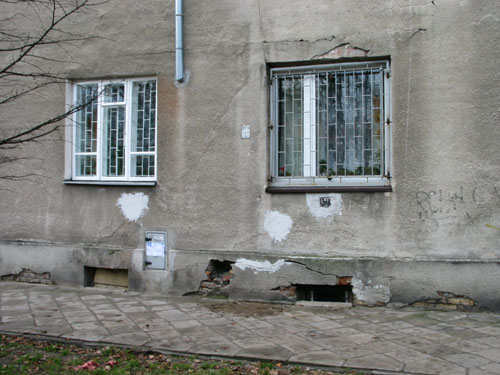 Historic buildings and structures, located in large cities or near highly developed industrial centers or within the immediate reach of the marine climate, are exposed to slow corrosive processes as a result of aggressive substances contained in the atmosphere and water.
Historic buildings and structures, located in large cities or near highly developed industrial centers or within the immediate reach of the marine climate, are exposed to slow corrosive processes as a result of aggressive substances contained in the atmosphere and water.
In the atmosphere, harmful substances form from dust, Dust, Fumes, gases and vapours, emitted in significant quantities from chimneys, as well as as a result of air pollution with exhaust fumes These substances carried by the wind attack the surfaces of the walls and their materials.
In surface and groundwater, aggressive chemicals can come from atmospheric water, which dissolves a series of gases contained in the air, from industrial and municipal wastewater, from soot particles and dust settled on the surface of the site, which, together with rainwater or melting snow, penetrate into the ground, and from components contained in the ground and groundwater or from other sources.
For brick buildings, a particularly high threat arises, when their structures are not sheathed, and the environment is rich in moisture and aggressive sulphate compounds, carbonate, chlorine, phenolic etc.
Aggressive volatile and liquid substances settle on the outer surfaces of the structure, and also penetrate into the interior of the structure and by chemical bonding with certain components found in the materials cause their destruction.
The process of destruction can be very diverse depending on local conditions., saturation of the environment with aggressive and other substances. The effectiveness of the effects of aggression depends mainly on the nature and concentration of the substance, operating conditions and resistance of the attacked material. Corrosive substances may react chemically with plastic in an aqueous environment, Oxidation, carbonation and hydration.
Destructive processes in walls are particularly vigorous in an irrigated environment, if it abounds in dissolved acids (especially sulfuric, sulfurous and nitrogenous), lyes, bases of appropriate concentration and all kinds of dissolved sulphate salts, especially sodium sulfate, magnesium sulphate, ammonium sulphate, etc..
The destruction of mineral materials is also very intense in a humid air environment, especially with the content of active gases, like for example.: Cl2, Hcl, H2S, HF. Particularly toxic is fluorine and hydrogen gaseous fluoride (HF). Fluoride digests glass, destroys marbles, stood, causes great damage to vegetation, has a negative impact on human and animal health.
Corrosion processes are slowest in air-dry environments, as well as when the ambient temperature drops below 0°C. At very low temperatures (below — 25°C) corrosion processes even cease completely. Nevertheless, even under such conditions, the gases in the air are still in the air. (WHAT, WHAT2, SO2, SO3, CS2), hygroscopic salt dusts (Kcl, NaCl) or other harmful substances attack and destroy the materials of masonry structures.
The impact of harmful compounds on materials and masonry structures is not immediately noticeable, especially when the air or water is slightly polluted or when the destruction process proceeds without loss of material mass.
The first symptom of chemical transformations in masonry materials are visible on the surface of stone and brick occurring white and gray spots, various types of raids, Eruptions, Infiltrates, loosening and peeling of the outer layers. Hence, corrosion gradually penetrates into the depths of the material, causing crushing of the mass of the component elements of the structure and their disintegration(IBD). Especially dangerous for masonry materials are aqueous solutions of compounds, which, in reaction with dissolved minerals, form salts. With increased humidity of the walls in the pores, capillaries and leaks salts dissolved in water form crystals. The pressure caused by crystallizing salts is many times greater than the pressure of freezing water and causes the structure of materials to burst.
Surface and plunge corrosion processes in mineral materials primarily develop in less resistant elements and materials, partially contaminated with sand, iron oxides contained in silicates, carbonate or organic substances, as well as in structures located in the most favorable conditions for corrosion. The nature of damage to brick materials and structures as a result of aggressive substances can be very diverse and sometimes very complex. Materials and structures in historic buildings are particularly sensitive to corrosion, especially when they have a strained and hygroscopic structure.